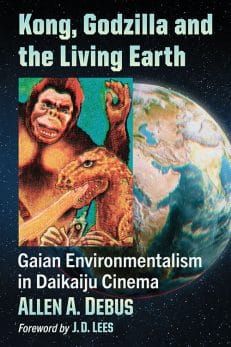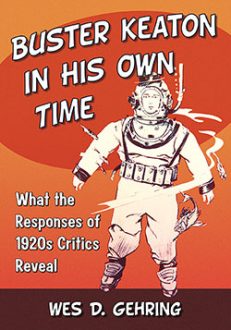Buster Keaton in His Own Time
What the Responses of 1920s Critics Reveal
$39.95
In stock
About the Book
Buster Keaton “can impress a weary world with the vitally important fact that life, after all, is a foolishly inconsequential affair,” wrote critic Robert Sherwood in 1918. A century later Keaton, with his darkly comic “theater of the absurd,” speaks to audiences like no other silent comedian. If you thought you knew Keaton—think again!
About the Author(s)
Bibliographic Details
Wes D. Gehring
Format: softcover (7 x 10)
Pages: 242
Bibliographic Info: 35 photos, bibliography, index
Copyright Date: 2018
pISBN: 978-1-4766-6680-8
eISBN: 978-1-4766-3326-8
Imprint: McFarland
Table of Contents
Preface and Acknowledgments 1
Prologue 3
1. Working Towards the Feature Films of 1923–1929 15
2. The First Two Features: The Three Ages (July 25, 1923) and Our Hospitality (November 20, 1923) 37
3. Sherlock, Jr. (April 4, 1924): John Bunny and Fatty Arbuckle Factors 59
4. The Navigator (October 14, 1924): Arguably Keaton’s Greatest Film 74
5. Seven Chances (April 22, 1925) 88
6. Go West (November 23, 1925) 102
7. Battling Butler (August 30, 1926) 118
8. The General (December 22, 1926): Groundbreaking Dark Comedy but Keaton’s Greatest Film? 132
9. College (September 10, 1927): Punishment by Way of Harold Lloyd Land 148
10. Steamboat Bill, Jr. (June 2, 1928) 161
11. The Cameraman (September 15, 1928): A Visit to Yankee Stadium 172
12. Spite Marriage (April 22, 1929): Somewhat Saved by Silence 184
Epilogue: Period Material Provides a Modern View 192
Filmography 205
Chapter Notes 207
Bibliography 220
Index 231
Book Reviews & Awards
“Gehring remains supreme in film comedy scholarship”—Choice.





